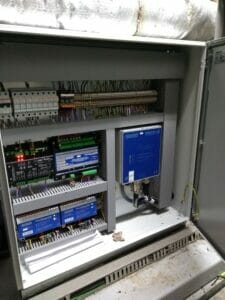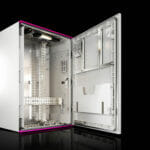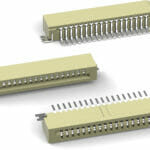Combined heat and power (CHP) gas engines are one of the most expensive pieces of equipment on an anaerobic digestion (AD) plant. They are also one of the most important, as a CHP engine unable to generate electricity means an immediate loss of income for the operator. Despite this, many AD operators take a hands-off approach to maintaining their CHP; either relying on expensive locked-in service contracts that only cover mechanical issues or waiting for a problem to occur before taking action.
Here, James Thompson, Managing Director of Gen-C, an independent CHP parts and service provider, explains how a live monitoring system can protect your engine from the five most common hidden causes of engine shutdown…
Knowledge is power
Today’s latest CHP engines are finely tuned, sophisticated pieces of kit that operate with precise tolerances. Correctly maintained, they will perform reliably for years to come; but leave them unchecked and you run the risk of underperformance, hard shutdowns and even catastrophic failure – all of which will reduce the volume of electricity being generated and, ultimately, an operator’s bottom line.
Compare it to the airline industry: would you trust an airline that only repairs its planes after they’ve broken? Or would you choose to fly with the carrier that constantly monitors its aircraft and takes pre-emptive action to protect its planes and passengers? Operators that can monitor their engine’s performance in real time, and review and compare data across a range of parameters, will be in the best position to prevent issues from happening, ensuring their CHP operates as intended and continues to generate income for them for years to come.
A false sense of security
This is equally important for those with an engine service contract. Despite costing thousands of pounds each month, such contracts only extend to the mechanical function of the engine itself. If an engine shutdown is attributed to an external factor, such as a gas issue, the contract is invalid. Not only will the operator then be forced to pay for the issue to be rectified by a third party, they can also find themselves being billed by their service provider for an out-of-warranty call out.
To identify and correct issues before they start affecting your engine’s performance, we recommend that operators install live engine monitoring. The IGS-LOG software, which comes as standard with the Motortech open access control panel favoured by today’s operators, enables owners to understand what constitutes normal operation for their engine and spot any downward trends or anomalies before they affect its smooth operation. Giving operators full control over their engine and ensuring the highest levels of performance, it monitors up to 25 parameters, including the following five common hidden causes of engine shutdown.
- Gas pressure
Momentary drops in gas pressure, or waning gas pressure over time, can result in a hard shutdown. Many operators become used to their engine cutting out as often as 10 or 12 times a day and simply restart it and carry on. But the long-term damage this causes to the engine can be irreparable – the effect of a hard shutdown on a sophisticated, modern CHP engine is akin to a Formula 1 car travelling at 100mph hitting a brick. Potential causes of drops in gas pressure include flaring or a blockage in the gas line or filter. By monitoring the gas pressure and noting any drops, operators can better identify the cause of any unexpected shutdown and take preventative action to protect their CHP.
- Gas quality
AD feedstocks are notoriously variable; inputs can differ both regionally and seasonally, producing biogas of varying quality. Such changes will affect an engine’s performance, particularly if harmful contaminants such as H2S are allowed to build up. By monitoring the gas composition, operators can spot any corresponding trends in engine performance and alter their feedstock as necessary before their CHP becomes adversely affected.
- Emissions
Monitoring emissions is not just a case of meeting the relevant criteria, it’s also a sure-fire way of determining the overall health of an AD plant and spotting any issues that have the potential to damage your CHP engine. The ComAp IGS-LOG provides 24/7 emission analysis, enabling an operator to fine-tune their engine. Operating without this vital piece of information is like a chef not tasting their food. It allows the operator to see if their engine is running rich or lean – a rich engine will be running hot and wasting energy, while a lean engine runs the risk of misfiring – and take the necessary steps to address any issues before they present a serious risk.
- Water pressure
Another common cause of a hard engine shutdown is a change in water pressure. While an operator would certainly notice the resulting interruption to their CHP’s performance, they would be unable to prove it was caused by water pressure and stop it from recurring unless the pressure was being monitored. Constant analysis of water pressure therefore helps an operator to avoid the peaks and troughs that can result in performance issues and promotes smooth and reliable operation.
- Kilovolts
Finally, live kilovolt monitoring can protect your CHP from long-term damage caused by ignition. An increase in kilovolts indicates a deterioration in spark plug performance, as the spark has to work harder to ‘jump’ the gap to create the initial spark. While it’s common for operators to gap and clean their spark plugs when they change the oil, this could be too late. An operator will often become used to hearing a tiny jump when their engine starts and dismiss it as a quirk of their engine, without realising that this noise is actually the sound of the engine misfiring. Every time this misfire occurs, it sends a shudder throughout the whole cylinder, placing additional stress on every part of the CHP. Live monitoring will highlight a rise in kilovolts or erratic KV readings, warning the operator of a potential issue with their ignition system or spark plugs and prompting them to take pre-emptive action to protect their CHP.
To find out how live engine monitoring can improve the performance and longevity of your CHP engine, contact [email protected].
- The Motortech open access control panel comes with the IGS-LOG as standard
- AD operators can improve their engine’s performance with real-time CHP monitoring










